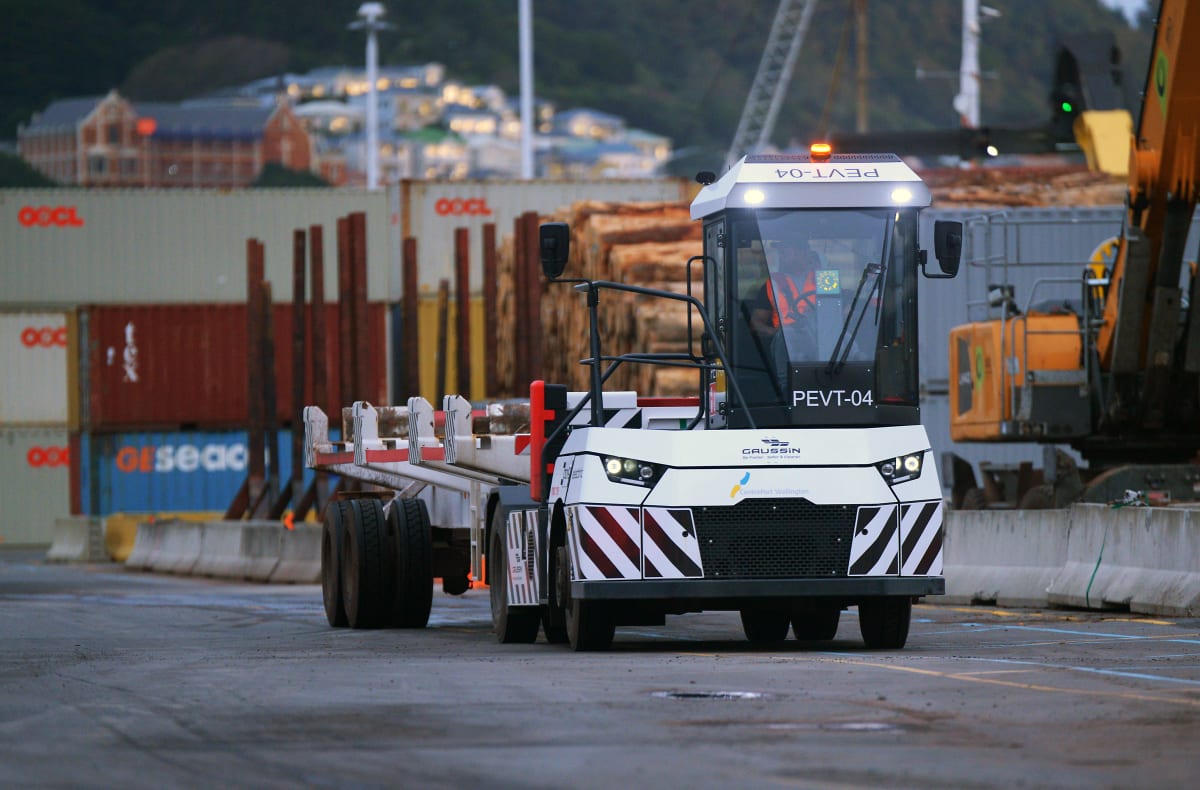
US-born sustainable finance expert Jason Patrick tells Nikki Mandow why he reckons New Zealand’s green bank is better than most | Content partnership
Jason Patrick has one of those CVs that makes you realise you haven’t done nearly enough with your life.
Environmental, science and economics-related degrees from Berkeley, Yale, and NYU. Green finance-based jobs at Bank of America Merrill Lynch, the Environmental Defense Fund (a prestigious New York-based not-for-profit), and Macquarie’s BioCarbon Group.
And now: New Zealand Green Investment Finance - the Government-established green investment bank set up to accelerate investment into companies and projects trying to lower their greenhouse gas emissions - or help others do the same. Jason Patrick is chief investment officer at NZGIF.

Patrick knew early on he wanted his work to make a difference, climate-wise. But the traditional routes didn’t appeal.
“I had been to grad school and had a degree in environmental management. So I was already thinking about the best approaches to effect positive environmental change. And that was when I realised: ‘I don't want to be an environmental lawyer. I don't want to be a regulator.’ More interesting, and effective, in my view, is using market mechanisms, and influencing, incentivising and working with businesses - even creating businesses in order to achieve environmental goals.”
Green finance.
Patrick’s first role post university was with the Environmental Defense Fund, an organisation founded in 1967 as “a scrappy group of scientists and a lawyer on Long Island, New York, fighting to save osprey from the toxic pesticide DDT”.
(Spoiler alert, EDF helped get DDT banned worldwide.)
By the time Patrick was there in the early 2000s, the not-for-profit specialised in business and market solutions to environmental problems, Patrick says.
"The particular mandate that this organisation has is far superior, frankly, to the investment mandates of a lot of its peer organisations around the world.” Jason Patrick, NZ Green Investment Finance
“I realised that was an incredibly powerful tool to achieve environmental goals, rather than the traditional approaches of regulation.”
Twenty years and four high-profile sustainable finance jobs later, Patrick says the New Zealand Green Investment Finance job appealed - despite being at the bottom of the world.
“One of the reasons I was interested in the role was the ability to establish the business from the very beginning in terms of the hiring, the policies, the market engagement, the strategy, all that sort of thing... Also, the particular mandate that this organisation has is far superior, frankly, to the investment mandates of a lot of its peer organisations around the world.”
Really?
Globally there are an increasing number of what are known as ‘green banks’, Patrick says - sustainability-focused financing institutions mostly owned or established by governments.
“The original green banks were set up with very limited investment mandates and abilities. That is, they were almost exclusively set up to do one thing: provide debt to large renewable power generation projects.
“And that's a wonderful goal, and some of them have been very successful. However, when the New Zealand team in Treasury was given the task to set up this organisation they quite wisely, in my view, went and spoke to a lot of existing green banks and said: ‘Hey, how has your mission and mandate worked? What do you wish you could do?’
“And based on that feedback, we developed the investment mandate we have.”
A wide brief
NZ Green Investment Finance can invest in a variety of different sectors which need to reduce their greenhouse gas emissions - transport, waste, process heat, buildings, or infrastructure, as well as energy, Patrick says.

For example, it has provided $15 million ‘green credit’ to Wellington’s CentrePort since the Kaikoura earthquake, so repairs and upgrades to the damaged port also serve to bring down its carbon footprint. The money has been used to buy electric container haulage trucks for around the port, and replace damaged rail infrastructure so more cargo can come in by train, not truck.
Most recently, CentrePort has switched out the huge halogen lights used to illuminate the port at night and replaced them with LEDs.
NZGIF has also provided $10 million in credit to help NZ Post transition its fleet to electric vehicles, and $20 million to help solarZero finance home solar panel installations.

It’s also provided a mix of debt and equity to smaller companies with carbon-reducing technologies - for example IoT business Thinxtra, low-emissions fleet transition company Carbn, and carbon management and reporting software company ESP.
The $4.45 million investment in ESP over the past two years includes $1.75 million to help ESP acquire BraveGen, thereby creating New Zealand’s largest energy efficiency and sustainability management solutions software and services business.
“These investments are a really interesting demonstration of the fact we don't just have to invest in something that's going to take a spoonful of greenhouse gas out of out of the atmosphere, but instead we're investing in a company that's going to allow a whole host of clients to reduce their greenhouse gas emissions.”
Jason Patrick sits on the board of ESP, Carbn,Thinxtra and low-emissions nitrogen fertiliser manufacturer TNUE - another NZGIF investee company.
A range of finance solutions
Other things make NZGIF different from the ever-increasing number of financial institutions offering green finance, Patrick says. For a start, NZGIF is deliberately designed to take a longer-term outlook. The Government’s goal is net carbon neutrality by 2050, so it understands these are long-term problems.
“A traditional private equity institution might want to return capital to the investors in its fund after, say, five years or seven years. That may be great for certain sorts of opportunities, but it's not great for everything, especially projects in the climate finance arena. What we're talking about for many of these sorts of investments is supporting new projects, new business models, or new capital infrastructure. Many of these investments are perfectly valid from a commercial point of view but only if they have a 10- or a 20-year time horizon.
“We’ve already done transactions with 20-year tenors.”
Bringing in private capital alongside the Government money is an important part of NZGIF’s mandate, Patrick says. Alongside demonstrating the possibilities of a particular company or technology to the market, NZGIF’s focus is on being a constructive, easy-to-deal-with partner, because that is critical to bringing private funding in behind its work, he says.
Being associated with the Crown is also attractive to some stakeholders.

For example, a deal with solarZero involved NZGIF working alongside Westpac, with both organisations providing lines of credit.
“Both from a qualitative and a quantitative point of view, driving private sector capital is absolutely essential to achieving meaningful climate goals.”
Another role for NZGIF - and for Patrick, given his experience with green finance products in the US and elsewhere - is to expose New Zealand banks and financial institutions to possible new ways of funding green projects.
“I talk about driving capital, and that often means, for example, raising money via financial products like funds or bonds. But in order to establish a financial product like that you have to deal with institutions which are used to seeing certain things a certain way.”
That might be a bank, or institutional investor, for example.
“And what I can tell you is that it's really hard to raise money around products that are completely different to what an organisation has dealt with before, because these are massive institutions with established ways of doing things and without necessarily the flexibility required.”
Banks and finance companies often have a set of lending products and criteria, and won’t lend outside them, he says.

“We can accelerate green transition by finding opportunities which we can structure in a way to make them recognisable and palatable to other institutions. So that's part of our role in the market - to try to take some of these opportunities and do the work to structure them into something that will be attractive to others in the market.
“For example, we have financed electric buses via an asset finance transaction specifically structured in order to be replicable and scalable, bringing in UK-based EV fleet and battery storage specialist, Zenobē which hadn't been in this market before.”
Towards 2050
NZGIF got a $300 million financial boost in last year’s Budget, taking its total investment capital to $400 million. Over the next couple of years, Patrick says NZGIF will expand into larger-scale investments, including infrastructure projects, and also possibly into earlier stage projects. These could include looking at less proven technologies which could potentially have a significant impact on New Zealand’s greenhouse gas emissions, but which would also be more risky.
Could that include technology that could help reduce methane emissions reduction from our dairy, beef and sheep herds - that most tricky of New Zealand problems waiting for a solution? It’s a tough call, Patrick says, because although methane emissions make up around a third of New Zealand’s total emissions, the technologies which could help stop those (mostly) cow and sheep burps - vaccines, probiotic feed supplements or breeding techniques, for example - are still unproven.
“Some of these opportunities are in demonstration pilot stage, but none of them are at the stage we would normally focus on - operating today, proven in the market, and with existing customers.
“Ideally we like impact and scalability - companies and projects which are ready to grow. And none of those opportunities are at that stage today.”
And Patrick’s future in this part of the world?
He says the combination of the role, the work NZGIF does, and New Zealand being a great place to live will keep him here a while longer.
“What’s been interesting for someone like myself is we’ve been able to do almost any type of investment structure - debt, corporate equity, project finance, credit guarantees - and we’ve been able to develop and manage financial products. The ability to have that sort of flexibility in a capitalised entity with our particular mandate in what I would call a relatively supportive policy context - and in a really nice place; that’s pretty attractive to me as you can imagine.
This story is part of a content partnership series with New Zealand Green Investment Finance







